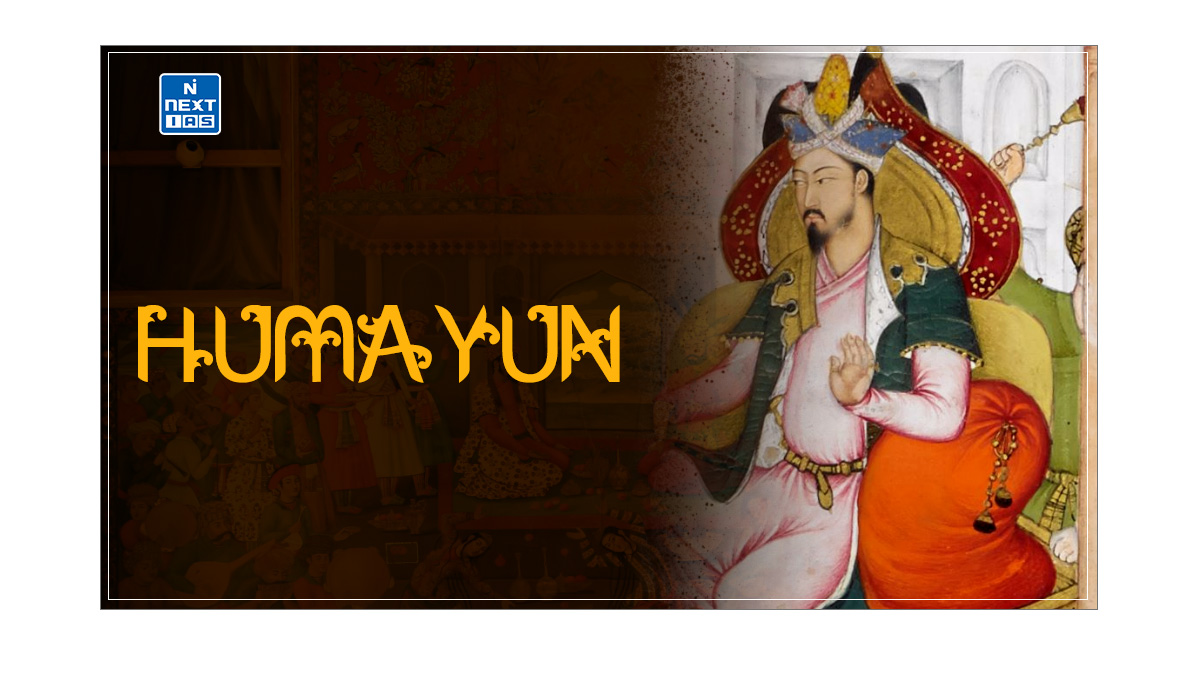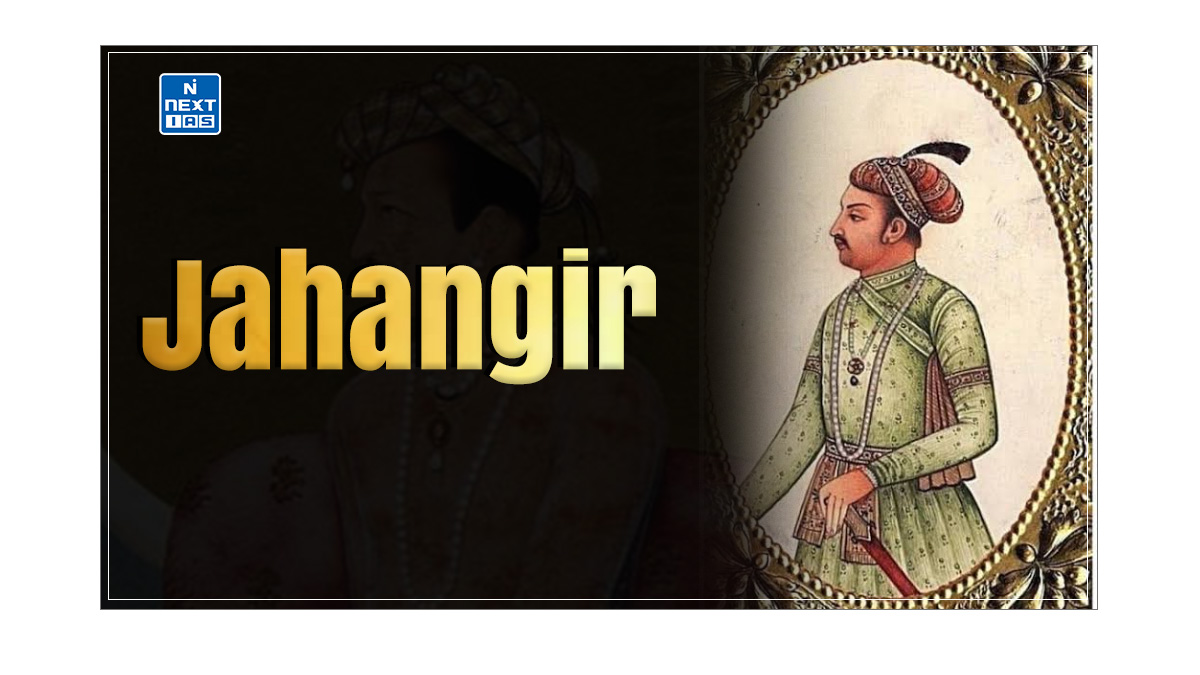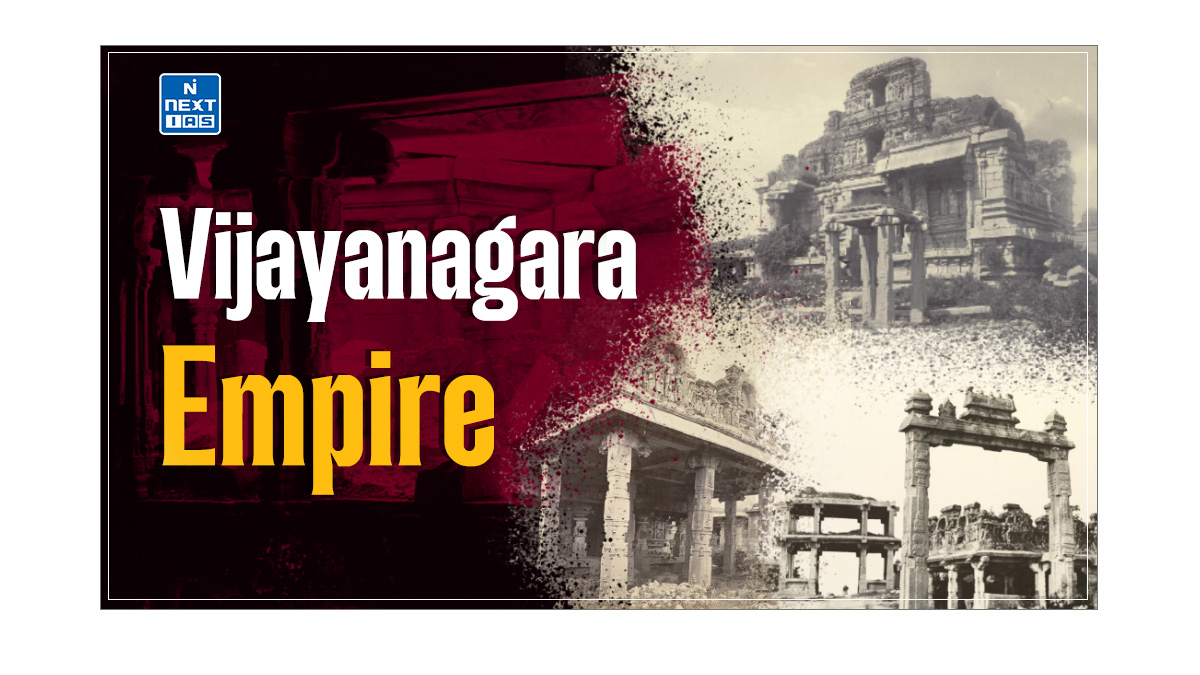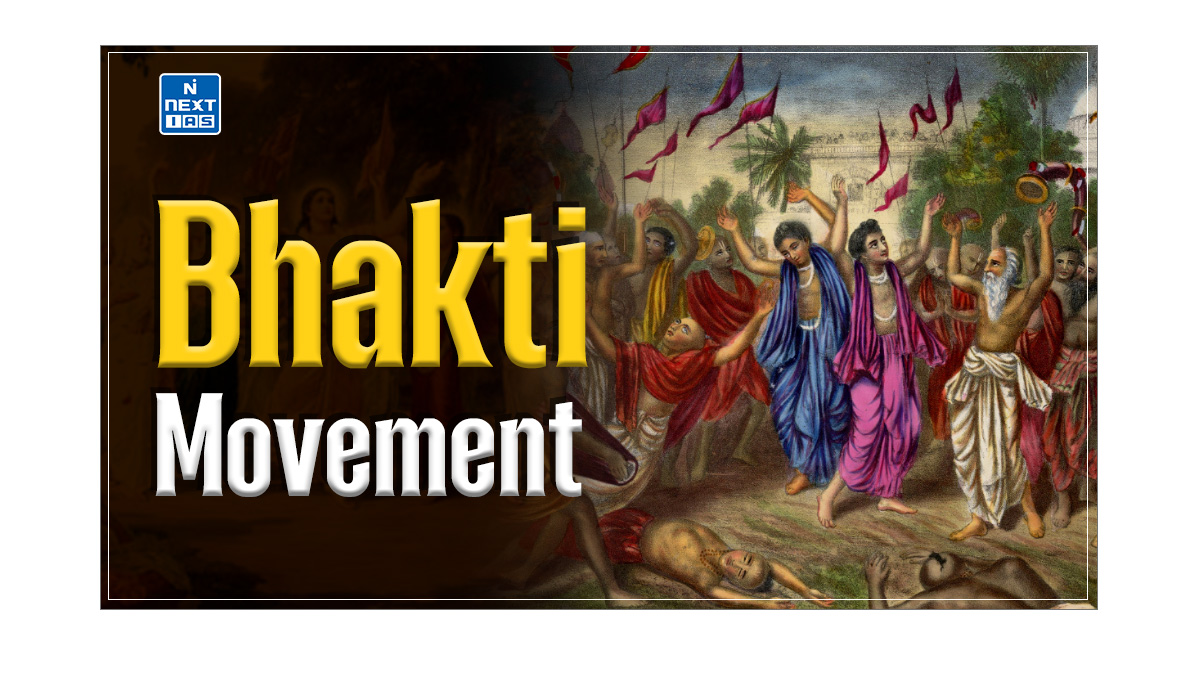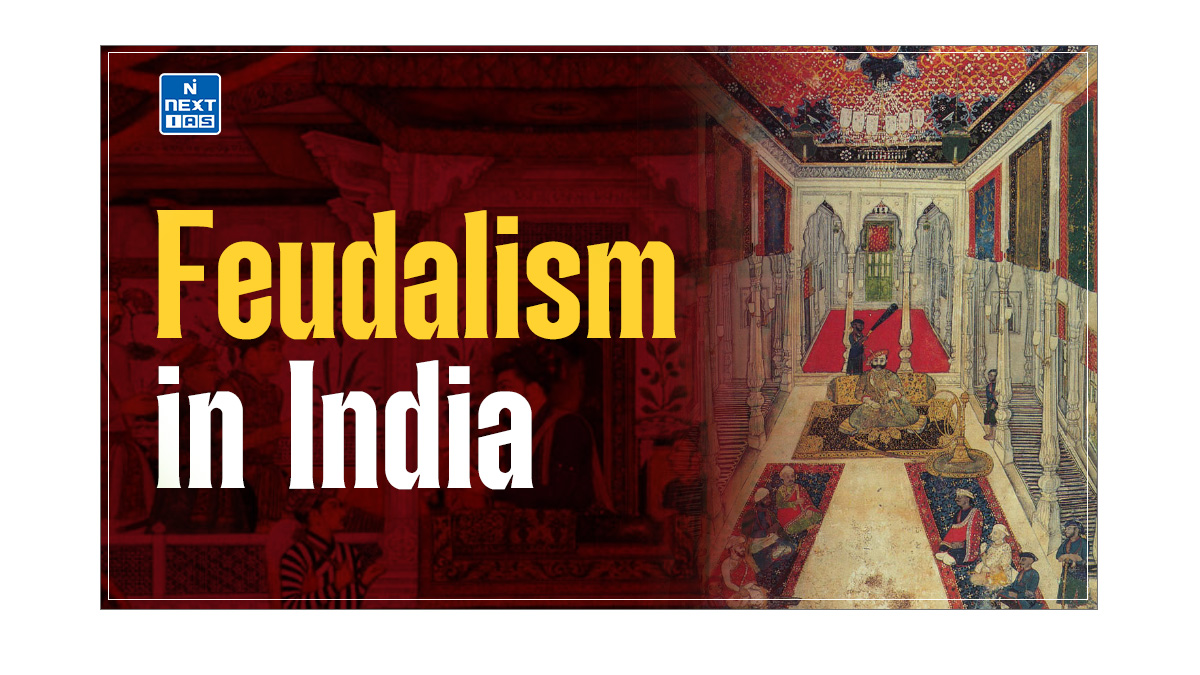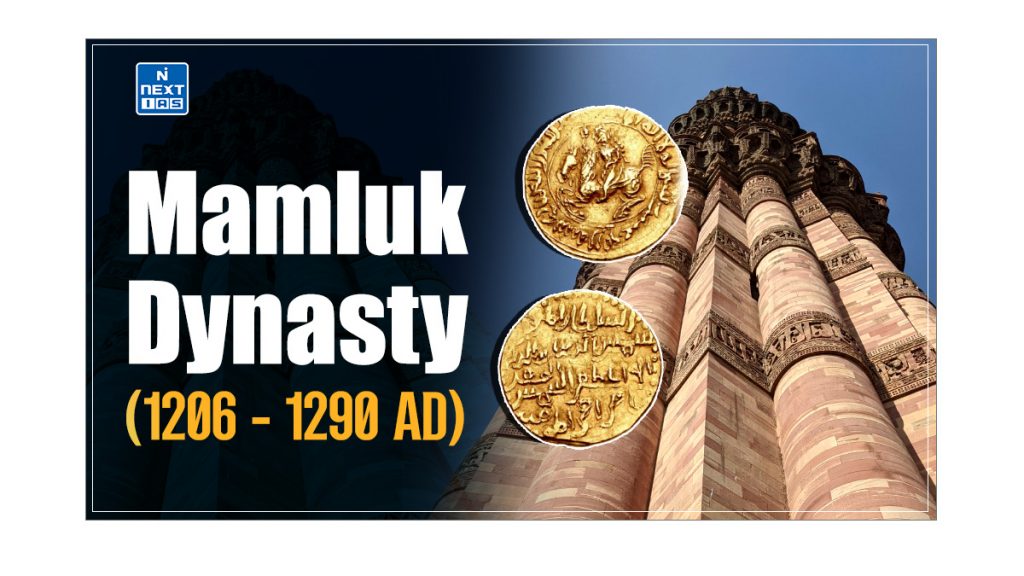
The Mamluk Dynasty, also known as the Slave Dynasty, was the first ruling dynasty of the Delhi Sultanate, established by Qutb-ud-din Aibak in 1206 AD. It laid the foundation for Muslim rule in India, establishing key administrative and military structures that shaped medieval Indian history. This article aims to study in detail the major rulers, administrative contributions, architectural achievements, and overall legacy of the Mamluk Dynasty.
About Mamluk/ Slave Dynasty
- Mamluk is an Arabic word meaning “owned”. It was used to distinguish the imported Turkish slaves meant for military service from the lower slaves used as domestic labour or artisans.
- The earliest rulers of the Delhi Sultanate were the Mamluks, who were also known as Slave kings because many of them were either slaves or the sons of slaves who became sultans.
- After Ghori died in 1206 AD, his dynasty was divided into multiple parts, and Qutb-ud-din Aibak became the Sultan of Delhi and founded the Slave Dynasty.
- The Muslim Mamluk rulers ruled over India from AD 1206 to AD 1290.
Founder of Slave Dynasty
- The founder of the Slave Dynasty, also known as the Mamluk Dynasty, was Qutb al-Din Aibak.
- Originally a slave who rose through the ranks under the Ghurid ruler Muhammad of Ghor, Aibak played a pivotal role in establishing Muslim rule in India after the Ghurid conquests.
- In 1206, he declared himself the Sultan of Delhi, marking the beginning of the Delhi Sultanate.
- His reign was characterised by significant architectural achievements, including the construction of the Qutub Minar, and he is credited with laying the foundations for a new political order in northern India.
- Aibak’s rule also initiated a period of consolidation and expansion, setting the stage for subsequent dynasties in the region.
- His legacy is notable for establishing a unique Indo-Islamic culture that would flourish in the future.
All the important rulers of the Mamluk Dynasty have been discussed in detail in the following section.
Qutb-ud-din Aibak (1206-10 AD)
- Qutb-ud-din Aibak was one of the most skilled warriors who served the dynasty after Muhammad Ghori died in AD 1206.
- Qutb-ud-din Aibak had played a pivotal role in furthering his empire in India, especially after the second Battle of Tarain.
- Qutb-ud-din Aibak is considered the real founder of the Delhi Sultanate and was the first independent Muslim leader from Northern India.
- Qutb-ud-din Aibak was called Lakha Baksh Sultan or giver of lakhs due to his generosity.
- Qutb-ud-din Aibak was brave and faithful.
- In 1210, Qutb-ud-din Aibak died of injuries received in a fall from his horse while playing chaugan (polo).
- Qutb-ud-din Aibak was a great patron of learning and patronised writers like Hasan-Un-Nizami and Fakhruddin.
- Qutb-ud-din Aibak initiated the construction of Qutb Minar (in honour of the famous Sufi Saint Khwaja Qutubuddin Bakhtiyar Kaki), which his successor Iltutmish completed after his death.
- Qutb-ud-din Aibak also constructed the Quwwat-ul-Islam mosque in Delhi and Adhai Din Ka Jhonpra in Ajmer.
Aram Shah (1210-1211 AD)
- After the death of Qutb-ud-din Aibak, the Amir and Malik of Lahore put Aram Shah on the throne.
- He served briefly and was considered a weak and worthless ruler.
- The Governor of Badaun, Iltutmish, defeated Aram Shah and acquired the throne.
Shams-ud-din Iltutmish (1211-36 AD)
- Iltutmish was the second most prominent ruler of the Mamluk dynasty. The caliph of Baghdad referred to him as the “Sultan.”
- During his tenure, he had to face multiple difficulties. Many important commanders, Ali Mardan Khalji, Nasir ad-din Qabacha and Taj al-din Yildiz, contested for independent territories.
- The rising power of Mongols under Genghis Khan significantly threatened the North-West Frontier of the Sultanate.
- Despite such a great threat, he successfully overcame it with many achievements. He constituted a corp of forty (40) loyal Slave Amirs known as Turkan-i-Chihalgani, also called Chalisa.
- In the field of administration, the Iltutmish made significant contributions to the currency system, the army, and the Iqtas.
- He initiated the ‘Iqta-dar System’ in which lands were granted to nobles and their officers instead of salary.
- Iltutmish completed the construction of Qutb Minar and also built a mosque.
- Iltutmish attempted to establish a centrally recruited army to increase the Sultan’s military power. He contributed by introducing the Silver Tanka and the Billon Jital, the two circulating coins of the period.
- Iltutmish’s tenure of twenty-six years can be classified into three broad phases:
- First Phase (1210-20 AD): When he was preoccupied with disposing of rival contenders to his authority.
- Second Phase (1221-27 AD): He dealt with Mongol Menace during this period.
- Third Phase (1228-36 AD): This was an important period during which he devoted himself to consolidating his dynasty.

Ruknuddin Firoz
- He was the son of Iltutmish and was crowned by her mother, Shah Turkan, after her death.
- When he was out of the capital, Razia, daughter of Iltutmish, deposed him to curb a rebellion in Avadh against him.

Razia Sultan (1236-40 AD)
- Razia Sultan was the only woman ruler during the Sultanate and Mughal period.
- Iltutmish considered all his sons ineffective for the throne and entrusted her daughter Razia as his successor.
- She was a great administrator, maintaining complete law and order during her tenure.
- Razia successfully defeated the rebellions of Multan, Lahore, and Hansi.
- She appointed an Abyssinian slave, Jamal-ud-Din Yakut, as Master of Horse (akhara).
- The Turkish nobles and clergy, who were primarily Turkish, did not consider her their ruler and conspired to kill her. Razia’s reign came to an end in 1240 AD.
- There was a serious rebellion in Bhatinda. Altunia, the governor of Bhatinda, refused to accept Razia’s suzerainty. Razia, accompanied by Yakut, marched against Altunia.
- However, Altunia got Yakut murdered and imprisoned Razia. Subsequently, Razia married Altunia, and they marched towards Delhi.
- In 1240, Razia became the victim of a conspiracy and was assassinated near Kaithal (Haryana).

Nasir-ud-din Mahmud (1246-66 AD)
- Nasir-ud-din Mahmud was the younger son of Iltutmish and was proclaimed ruler of the Sultanate from 1246 AD to 1266 AD.
- He was considered to be a kind-hearted and God-fearing ruler. He spent most of his time writing down verses of the Quran.
- Unlike many of his predecessors and successors, Mahmud strictly followed monogamy.
- Nasir-ud-din Mahmud married Balban’s daughter and gave all power to Balban, his prime minister.
- According to Ibn Battuta and Islami, Balban poisoned Nasir-ud-din and ascended the throne.
Ghiyas-ud-din Balban (1266-87 AD)
- Ghiyas-ud-din Balban, a Turkish slave who was also known as Ulugh Khan, seized the power of the dynasty after the death of Nasiruddin Mahmud.
- During Balban’s tenure, the law and order in Delhi and the doab region were in a poor state.
- The Rajput zamindars had set up forts in the eastern region of Awadh and Ganga-Yamuna doab. Balban worked hard to elevate the position of Sultan and maintain autocratic rule.

- Balban’s reign is known as a period of consolidation rather than expansion.
- The law and order situation around Delhi and the doab had deteriorated.
- The roads were infested with robbers and dacoits, so much so that even communication had become difficult.
- To deal with these elements, Balban adopted a policy of blood and iron. In the Mewat area, many were mercilessly pursued and put to death.
- In the regions around Badayun, Rajput strongholds were destroyed, the jungles were cut down, and colonies of Afghan soldiers were stationed to safeguard roads. By these harsh methods, Balban controlled the situation.
- Balban’s tenure brought many administrative and military changes:
- Balban introduced the ritual of Sijadah (Prostration) and Paibos (Kissing the feet) to dignify the status of the Sultan.
- Balban reorganised the army and maintained an efficient spy system.
- Balban broke the power of Chalisa and resorted to the prestige of the crown.
- The growing authority of Balban alienated many of the Turkish chiefs. They, therefore, hatched a conspiracy (1253) and ousted Balban from his position.
- Balban was replaced by Imaduddin Raihan, who was an Indian Muslim.
- Balban’s heir was his older son, Prince Muhammad Khan, who died in a battle against Mongols in 1285.
- After consolidating his power, Balban assumed the grand title of Zil-I-Ilahi.
- Balban propounded the theory of Niyamat-e-Khudia (representative of God).
- Balban had called himself the ‘Helper of Caliph’ in his inscription on the mosque walls at Garhmukteshwar.
- Balban fortified his empire against Mongol invasion.
- Balban ordered the nobles to stop the luxury living.
- Balban introduced the Persian festival of Navroz to impress the Nobles and people with his wealth and power.
- Balban patronised many Muslim scholars and sheltered many central Asian refugees.
- Balban reorganised the military department (diwan-i-arz) and deployed the army in different parts of the country.
- Balban was considered the main architect of the Sultanate of Delhi, mainly in terms of government and institutions.
- After his demise in 1287 AD, his grandson Qaiqabad succeeded to the throne. During this period, the government affairs fell into disorder and the Nobles began to form factions to seize power.
- Jalaluddin Khalji, the Ariz-I-Mamalik (minister of war), gathered all the power in his hand and murdered Qaiqabad.
- This ended the Slave dynasty in 1290 AD, and the new dynasty of Khalji emerged under the leadership of Jalaluddin Khalji.
Theory of Kingship of Balban
- Balban was the first ruler of the Delhi Sultanate to articulate a comprehensive theory of kingship.
- Sassanid Persia greatly influenced Balban’s theory of kingship. He asserted that the king was the shadow of God (Zillah).
- Balban’s belief was that he was only accountable to the almighty and his actions were immune from public scrutiny.
Sijada and Paibos

- He introduced Sijada (prostration) and Paibos, kissing the feet of the monarch.
- Balban believed in patriarchal despotism. He believed that only a despot could extract obedience from his subjects and ensure the state’s security.
- Balban’s greatest contribution was consolidating a standing army in the centre and establishing a department of army called Diwan-i-Arz.
- Balban was convinced that the glory of kingship was possible only by following the Persian tradition, which he very carefully followed in his personal and public life.
- Balban stressed Genealogy, claiming descent from the mythical Turkish hero Afrasiyab. His theory of kingship, coupled with his policy of blood and iron, paid him good dividends. He enhanced the prestige of the sultanate of Delhi.
Administration of Mamluk Dynasty
- The expansion of the Delhi Sultanate led to the emergence of a powerful and efficient administration system.
- The sultan was the head of the administration and an independent sovereign of a certain territory. There were many officials to look after the royal household.
- As the head of the diwan-i-wizarat, the wazir was the most crucial figure in the central administration.
- The wizarat organised revenue collection, exercised control over expenditure, kept accounts, disbursed salaries and allotted revenue assignments (Iqra) at Sultan’s order.
- The diwan-i-arz, or military department, was headed by the ariz-i mumalik. He was responsible for the administration of military affairs. He inspected the troops maintained by the iqta-holders.
Art and Architecture of Mamluk Dynasty
- The Mamluk dynasty built multiple majestic monuments and buildings during their regime. Some of the important buildings constructed by the Mamluk or Slave dynasty include:
- The Qutb complex,
- The Qutb Minar,
- The Tomb of Iltutmish,
- The Tomb of Balban,
- The Quwwat ul-Islam mosque,
- The Tomb of Nasir-ud-din Mahmud, and
- The Adhai Din ka Jhonpara etc.
Importance of Mamluk Dynasty
- The sultans of the Mamluk dynasty made the greatest contribution to architecture. An Indo-Islamic style of architecture developed through a harmonious blend of Indian and Islamic traditions.
- Politically, the Slave Dynasty laid the foundation for subsequent dynasties like the Khaljis and the Tughlaqs to establish a mighty empire.
Conclusion
The Mamluk Dynasty played a pivotal role in shaping the early Delhi Sultanate, setting the stage for future Muslim rulers in India. Through their military conquests, administrative reforms, and architectural achievements, they established the framework for governance and cultural development in medieval India. Their contributions, especially in architecture, left a lasting legacy, and the policies they implemented were further built upon by the dynasties that followed, such as the Khaljis and Tughlaqs, ensuring their significance in the annals of Indian history.
Frequently Asked Questions (FAQs)
Who is the founder of the Slave Dynasty?
The founder of the Slave Dynasty is Qutb al-Din Aibak.
Who was the last ruler of the Mamluk Dynasty?
The last ruler of the Mamluk Dynasty was Nasir al-Din Mahmud.
Who completed the Construction of Qutub Minar at Delhi?
The construction of Qutub Minar was completed by Iltutmish.
Which was the first dynasty of the Delhi Sultanate?
The first dynasty of the Delhi Sultanate was the Mamluk (Slave) Dynasty.

